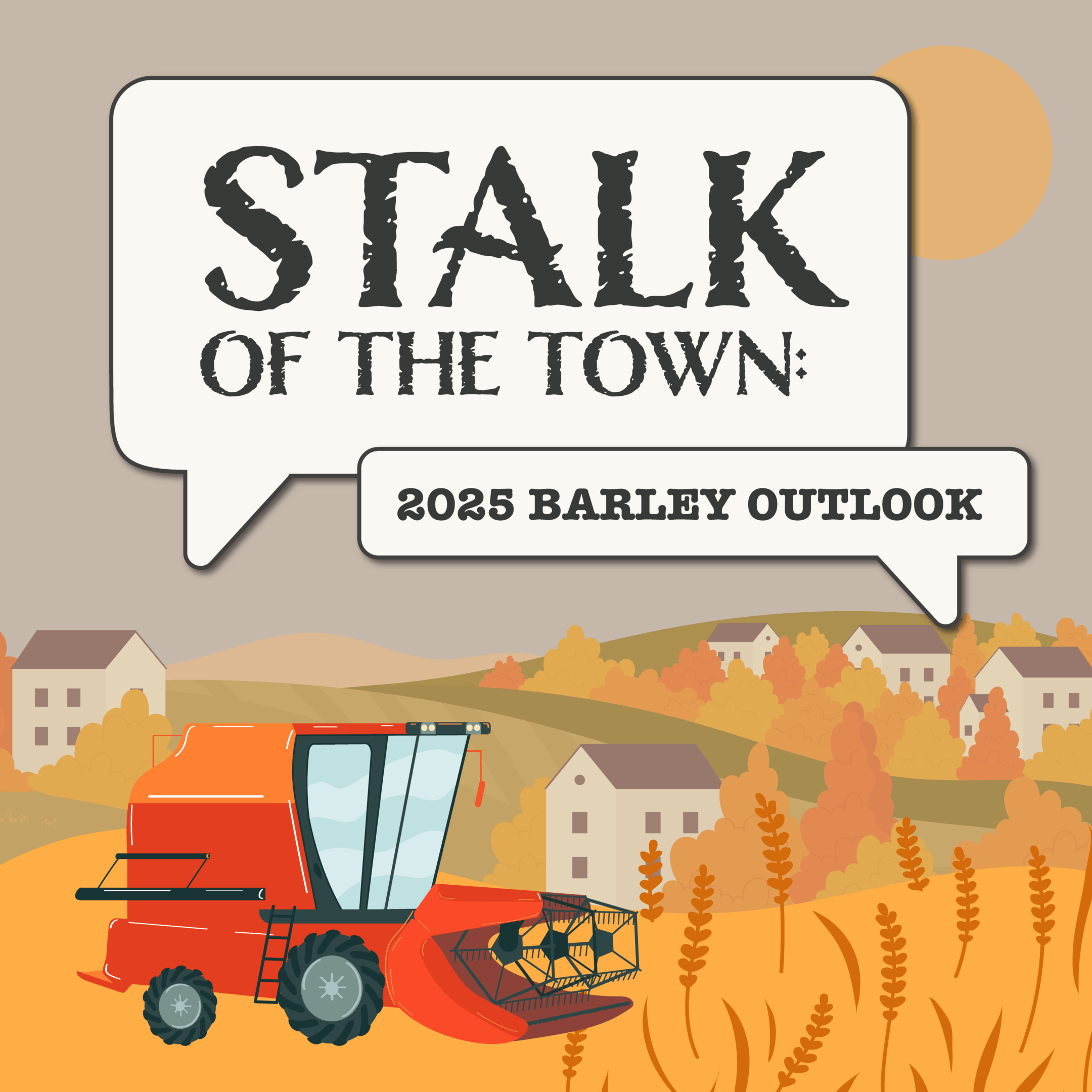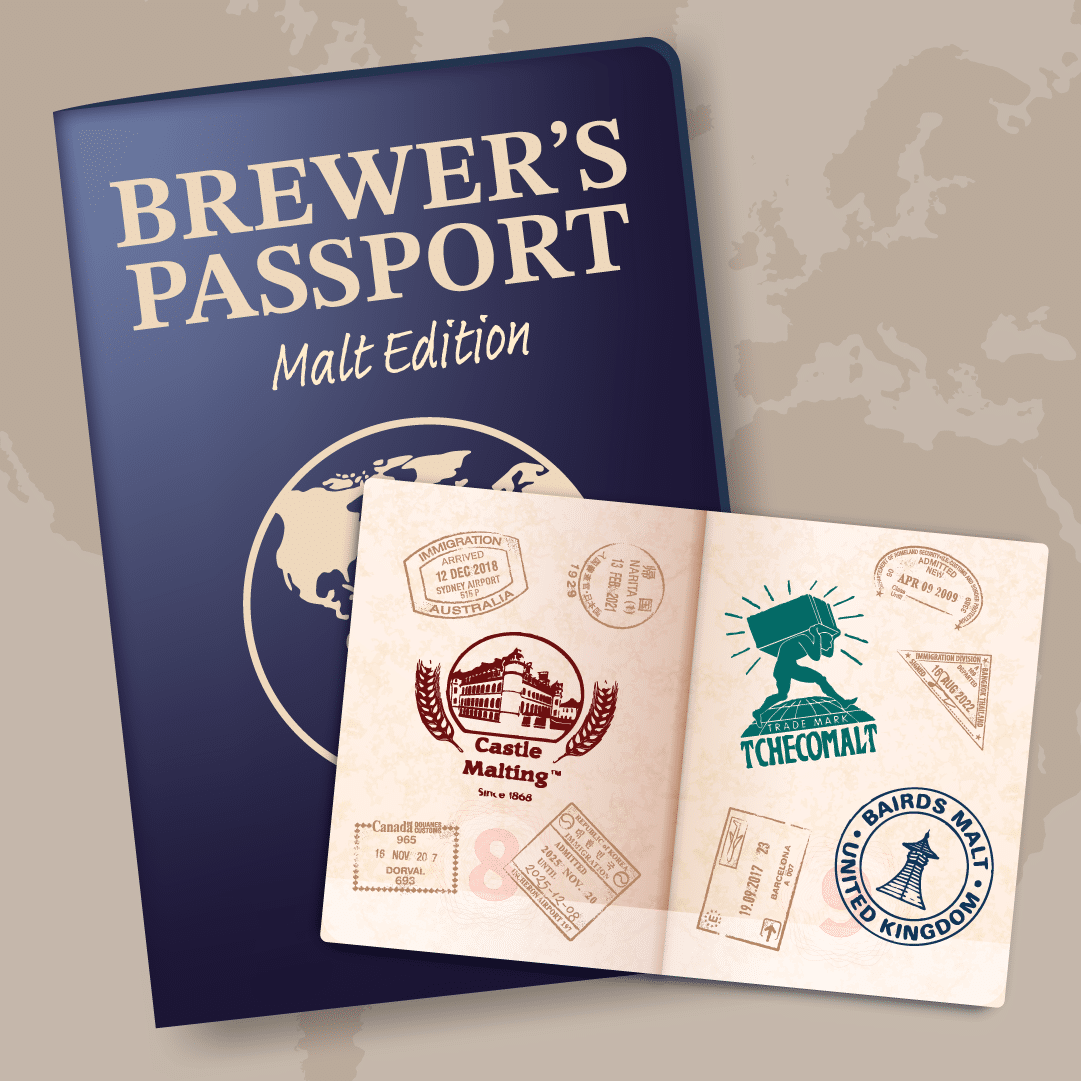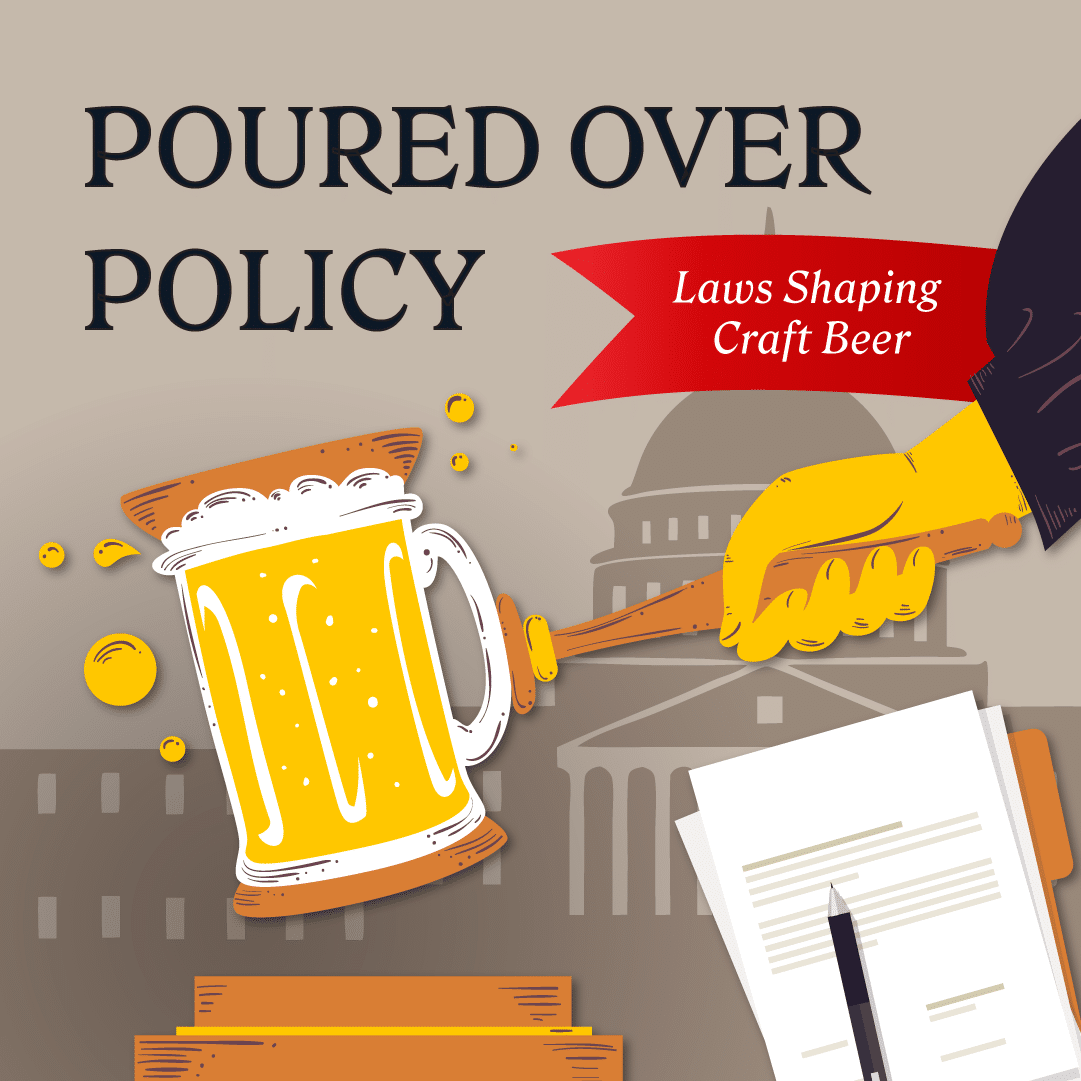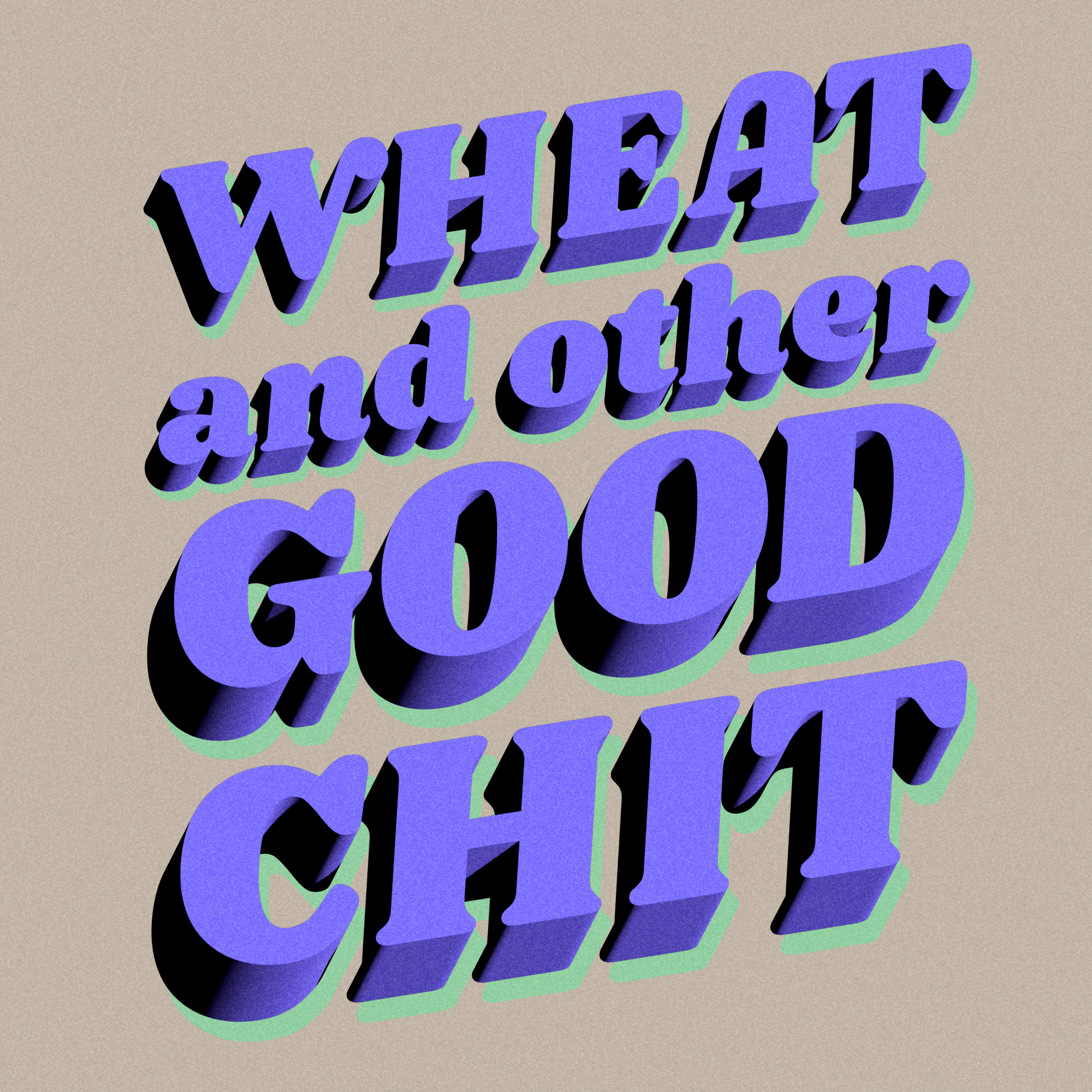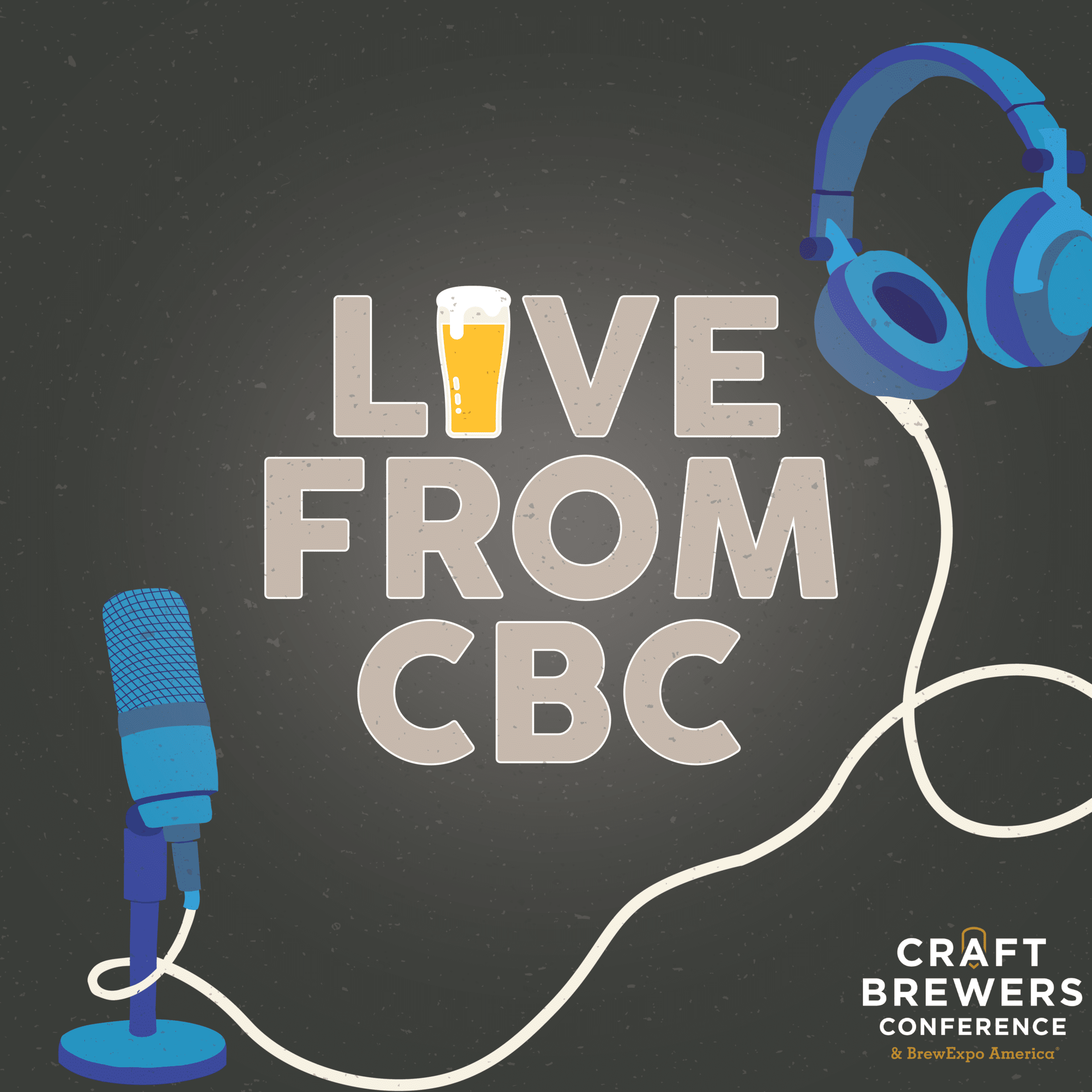
Douglass Miller
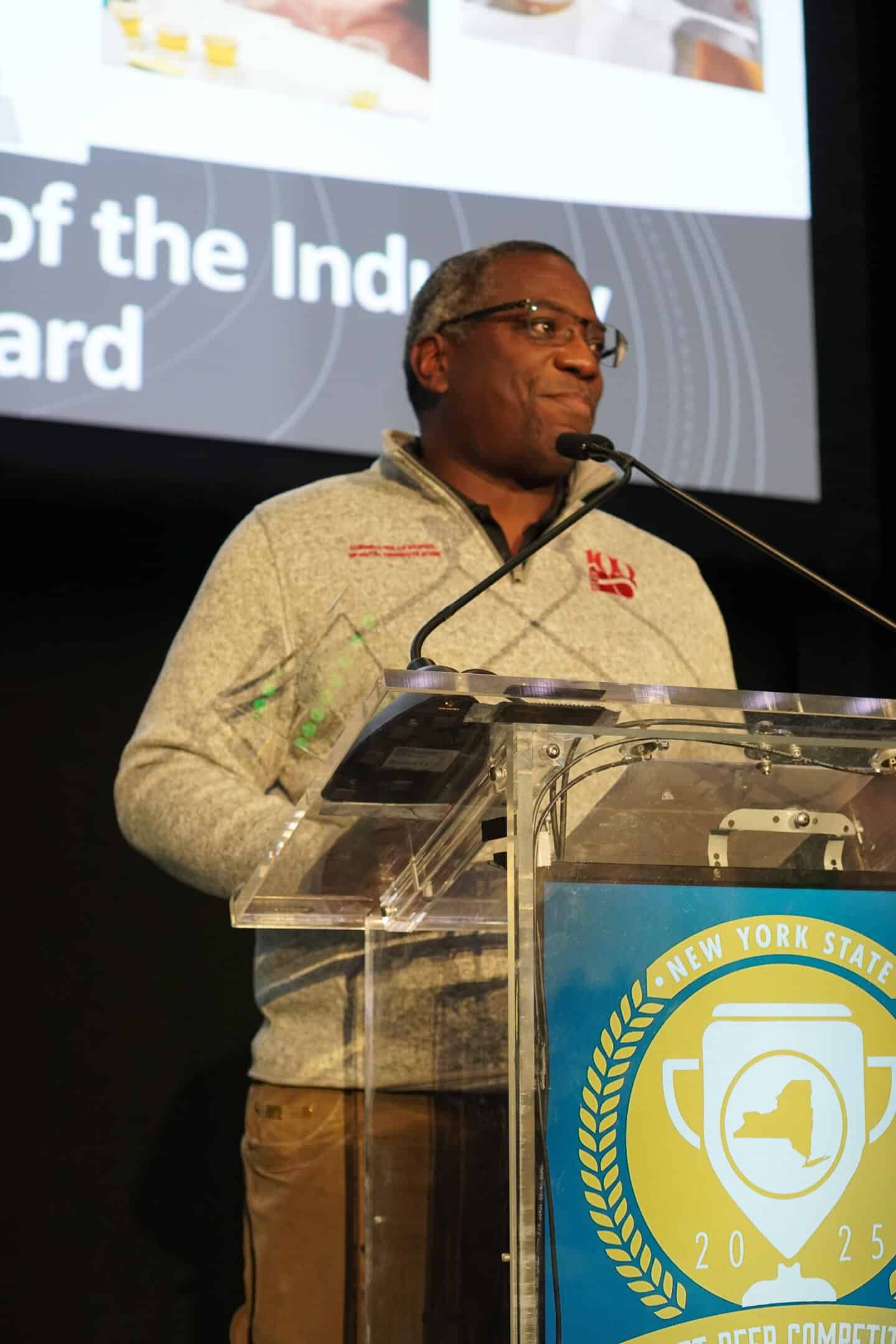 Douglass Miller is a senior lecturer in food and beverage management at Cornell University’s Nolan School of Hotel Administration. He previously taught hospitality and service management at The Culinary Institute of America. He is a Certified Specialist in Spirits and a Certified Beer Server through Cicerone and the Sake School of America as a Certified Sake Advisor. He also completed the Introductory Sommelier Course through the Court of Master Sommeliers.
Douglass Miller is a senior lecturer in food and beverage management at Cornell University’s Nolan School of Hotel Administration. He previously taught hospitality and service management at The Culinary Institute of America. He is a Certified Specialist in Spirits and a Certified Beer Server through Cicerone and the Sake School of America as a Certified Sake Advisor. He also completed the Introductory Sommelier Course through the Court of Master Sommeliers.With over 30 years of experience in the hospitality industry, Douglass has worked in major cities across the U.S. for prestigious organizations like Four Seasons Resorts and Marriott, as well as several independent hospitality companies. He holds degrees from the Culinary Institute of America, SUNY Empire State College, and a master’s in hospitality administration from UNLV. Douglass is actively involved in the industry as a board member for several organizations and has contributed to various publications and books on beer, hospitality and cocktail culture.
Dan Kurzrock
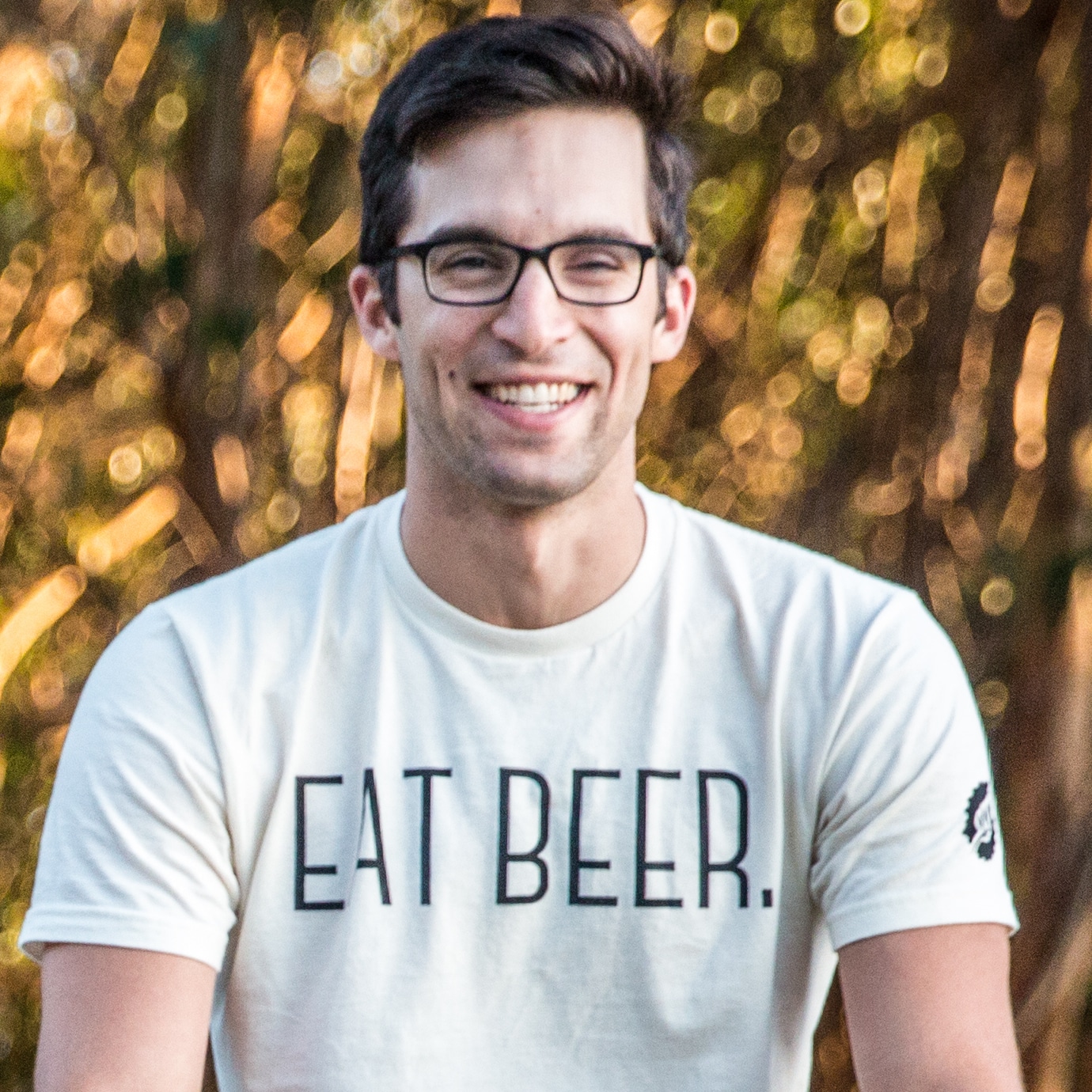
Dan is the Founder & CEO of Upcycled Foods, Inc., the leading innovation and ingredient platform powering the upcycled food economy. He’s a vanguard of the upcycled food movement who championed its potential among consumers and food businesses alike.
Dan’s informative talks and papers outlining challenges in the food industry and his passion for sustainable solutions elevating him as a leading voice and thought leader in the industry, advancing upcycled foods and waste mitigation initiatives. Dan and team have passionately applied those solutions to manufacturers byproducts and have developed patented tech and many commercial applications to advance the cause.
Dan is also a co-founding board officer of the industry trade groups Upcycled Food Association and Upcycled Food Foundation. He earned his bachelors from UCLA, where underage homebrewing started it all, and holds an MBA in sustainable business from Presidio Graduate School. When he is not championing food system sustainability, Dan can be found tending to his garden, conducting part-time gravity research in the mountains and exploring trails with his young family.
MORE EPISODES
SEASON 6, EPISODE 10: THE AFTERMASH
PODCAST HOSTS:
HEATHER JERRED – TERRITORY MANAGER, COUNTRY MALT GROUP
BRITTANY DRENNAN – TERRITORY MANAGER, COUNTRY MALT GROUP
PODCAST GUESTS:
DOUGLASS MILLER – SENIOR LECTURER, NOLAN SCHOOL OF HOTEL ADMINISTRATION, CORNELL UNIVERSITY
DAN KURZROCK – FOUNDER & CEO, UPCYCLED FOODS
Key Points From This Episode:
- The group discusses how much spent grain is available yearly
- Features a conversation with Douglass Miller about some great ways to use spent grains in everyday home recipes
- Dan Kurzrock discusses Upcycled Foods and changing the mind set on spent grains and its benefits
- Despite its name, spent grain still contains high levels of protein, fiber, and micronutrients, making it a valuable ingredient for both culinary and commercial use.
- Brewpubs can reuse spent grain in recipes like bread, waffles, and meatballs.
- Proper storage is critical due to its high moisture and spoilage risk.
Resources From This Episode:
Transcript - The AfterMash
EPISODE S.6, E.10
[THE AFTERMASH]
Heather (00:09):
Welcome back to another episode of The BrewDeck podcast. I am your host, Heather Jerred, and I am joined by my other host, Brittany Drennan. Hi, Brittany. How are you?
Brittany (00:18):
Hi, I’m wonderful.
Heather (00:21):
We’re going to be discussing Spent Grain and talking with some guests that have come up with some really creative ways of utilizing it within your breweries and outside [00:00:30] of breweries as well, beyond just using it as feed, which we know is obviously a really great way to utilize it. I think Brittany’s got some info on spent grain.
Brittany (00:39):
Yeah. Y’all want a little facts, a little trivia here. Spent grain can constitute as much as 85% of a brewery’s total byproduct. Wild.
Heather (00:51):
That’s insane. It’s so much.
Brittany (00:54):
Well, listen to this though, 20 billion pounds in the US every year [00:01:00] of spent grain and 1 billion coming out of Canada.
Heather (01:04):
Oh, wow.
Brittany (01:06):
That’s billion with a B, like [inaudible 00:01:09].
Heather (01:09):
That’s a lot of spent grain.
Brittany (01:13):
It’s insane.
Heather (01:13):
It’s insane. One of our guests, you’ll hear him refer to it as the product formerly known as spent grain because there is so many uses for this, which we are going to talk about.
Brittany (01:25):
I love that reference from him. So spot on because it’s one [00:01:30] of those things that people don’t have a second thought about, especially consumers who come up and order a beer. Oh, one more fact. What?
Heather (01:40):
Oh, fun.
Brittany (01:41):
Every six-pack of beer uses approximately one pound of malted barley and other grains.
Heather (01:48):
Oh, wow. So every six-pack that I drink, which, let’s be honest, is one pound of malted barley.
Brittany (01:56):
Crazy.
Heather (01:57):
Crazy. Well, today we are chatting with Douglass [00:02:00] Miller. He is the senior lecturer at the Nolan School of Hotel Administration Cornell University, about his article that he wrote for the BA that was titled Using Spent Grain in Your Brewpub’s Kitchen. That’s a really good article. We will also probably tag that in our show notes so that you guys can take a look on there because there is a recipe on there that you should definitely go take a look at. We are also speaking to Dan Kurzrock, Co-founder of Upcycled Foods. So let’s go take a listen. [00:02:30] We are now very lucky to be joined by Douglass Miller, Senior Lecturer at the Nolan School of Hotel Administration Cornell University. Did I get that one right?
Douglass (02:41):
Yes, you did.
Heather (02:41):
Yes. Thank you so much for joining us today, Doug. We are obviously going to talk about spent grain and you wrote a really great article for the BA few years ago about utilizing spent grain and I do want to jump into that, but I would love for you to tell us a little bit about yourself. I looked up some of your faculty expertise. It is really interesting, [00:03:00] cocktails, beer, beverage management, and I see that you’ve spoke at the Craft Brewers Conference and you’ve spoke at Tales of the Cocktail and everything, so I’d love to hear how you got fully involved in all of this.
Douglass (03:12):
Like many people in the industry, I started as a dishwasher when I was 16 making $3.35 an hour. Interesting, fun fact, one of the first things I learned how to do when I was 16 working at this restaurant was tap a keg of beer. I did it incorrectly. I didn’t turn the gas off when I took a shower.
Heather (03:29):
Yeah, that’ll [00:03:30] happen.
Douglass (03:32):
But at 16, that was not a bad thing at all. I went on to go to the Cornell Institute of America for university for college and then worked many years in the industry all over both coasts, California, New York. And then throughout my career I’ve always just loved beverages. There are great stories, there’s creativity. It is certainly a great way for people from an operator standpoint financially and how [00:04:00] it can bring communities together is one things I really like about beverages in general. The last nine years I’ve been here at Cornell University teaching courses, food and wine pairing, beer appreciation, and then also restaurant management course.
Heather (04:18):
Beer appreciation, I feel like I would love to take that course.
Douglass (04:22):
Well, and I tell the students, I just want them to be better consumers and make smart decisions about the beer purchasing. [00:04:30] It’s interesting, I’ve been teaching this course for years now and how their consumption habits have changed over the years and what they like over the years has shifted because I started teaching that about 15 years ago at the CIA.
Brittany (04:42):
We’re noticing that, too, as professionals in the industry and it seems like everything has taken that shift you have an interesting perspective of seeing that firsthand, so that is wild. Okay, so you wrote an article for the BA a while back titled Using Spent Grain in your Brewpub’s Kitchen. [00:05:00] How did this article come to be? What got you on the train of spent grain?
Douglass (05:06):
So about nine years ago I was one of the people who started the brewery at the Cornell Institute of America, and I was fortunate because it’s also a place where there’s master bakers, chefs and et cetera. And what people consider spent grain, I started doing research and saying, “Could this be utilized for food product?” And that’s what I started going down the rabbit hole. Even though people say it’s spent grain, it [00:05:30] still does have a lot of uses. Most places it’s animal feed or composted, but it can be incorporated into food items that change different aspects of that food product than a positive way.
Heather (05:44):
So in the article you talk about the challenges of processing spent grain and working with spent grain. Can you tell us a little bit more about that?
Douglass (05:52):
So there’s still a lot of sugar in the spent grain and the beer process, yes, a lot of it utilized, but there’s still a lot of sugar it it. Plus, [00:06:00] you’re looking at a warm product and anybody who’s worked a brewery knows how much fun it is shoveling spent grain out of the vessel and because of the sugar and the warmth, it is very quick for microbial growth. So molds, things of that nature grows on it very quickly.
Brittany (06:16):
How can spent grain be used in, let’s say, cooking?
Douglass (06:19):
So the key to handling this grain is either one or two things, freezing it to make it shelf stable or dehydrating it to lower the moisture content to make it shelf [00:06:30] stable. Even if you freeze it, eventually you really got to get the moisture content down so you can dry it in oven on sheet trays is how I did it, and then mill it into a flour. And then once you mill it into a flour, you can utilize it in a lot of different means, baked goods and non-baked goods.
Heather (06:47):
So what is the ratio that you can use?
Douglass (06:50):
Depending on what you’re making, something like bread, 10% you can use spent grain. It will increase because there’s still crude oils, positive crude [00:07:00] oils, ashes, protein in it, so it can increase some nutritional value with some zinc and iron manganese in it. Plus, the other thing, spent grain, the brine itself is how it retains moisture, so it’ll retain moisture different than something that is all wheat flour. So it’ll maintain a moisture content within something, which is why it’s great in brownies too.
Heather (07:24):
I guess this probably going to vary depending on what the grain bill is, but what would you say is the flavor profile [00:07:30] of spent grain? What does it add to a recipe?
Douglass (07:32):
So depending if it’s black malt or crystal malt or regular Pilsen malt, yes, that will change different aspects, but if somebody is making a stout or a porter and took that grain and milled it down, it’s going back to brownies. It has the same flavor profile as brownies or chocolate cake. You could take something if you’re making a high amount of pills in their malt or something lower, SRM [00:08:00] color value, that lends itself well to breads or other types of baked goods. They’re great in sticky buns.
Brittany (08:08):
You talked a little bit about the bacteria potential issue. Are there any other challenges that people should know about with working with spent grain?
Douglass (08:19):
The only other challenge is you have way more st spent grain probably in a brewery than you know what to do with as far as baking goods because the amount that is utilized within a brewery, [00:08:30] even a smaller brewery, I think the best aspect would be taking a portion of that, five gallon buckets worth, toss it in the freezer and then when you’re ready, dehydrate it in a simple oven and then mill it and off you go. Because once it’s lower moisture content, it’s shelf stable for a couple of weeks.
Heather (08:48):
So what would a brewpub need to get started? Any special equipment for this or could they use stuff that they most likely have in house?
Douglass (08:57):
Pretty much everything they have in house, any type of [00:09:00] oven to dry it out if you want to. The one thing that most places probably have to get would be a flour mill. It grinds finer than you use a mill for to make beer. So grabbing a flour mill and those are readily available, even small tabletop ones are very easy to obtain.
Brittany (09:19):
Do you have any advice to people that are looking at creating recipes with spent grain?
Douglass (09:25):
The only other piece of equipment I’d probably get would be some type of sifter because [00:09:30] since you have the brand hall on the barley itself, that will not mill readily available, so you don’t want to sift that out. But after that, I’m in the mindset of play. Why not play? It doesn’t work out, you make adjustments.
Heather (09:45):
So what are some of your favorite recipes you’ve tried? You’ve talked about where you’ve said sticky buns, you’ve said brownies, obviously bread and I think pizza dough is a really common one.
Brittany (09:54):
Those really dense items.
Heather (09:57):
Yeah. What are some of your favorite?
Douglass (10:00):
[00:10:00] Waffles.
Heather (10:01):
Waffles, oh, wow.
Douglass (10:03):
So you can do with some whole wheat flour, regular flour and spent grain flour and make waffles with it, add some buttermilk.
Brittany (10:11):
That sounds amazing.
Heather (10:12):
That sounds delicious.
Douglass (10:13):
You can use it for a binder in meatballs or meatloaf.
Brittany (10:19):
Oh, dang, very versatile.
Heather (10:21):
Yeah.
Douglass (10:22):
Yes, you can totally use it in savory dishes, so you can put it in meatballs and help bind the ground meat.
Brittany (10:27):
Very cool.
Heather (10:29):
Where could people [00:10:30] look to maybe find these recipes? I know there is one, spent grain waffles are included with your article, which we will also include in our show notes. Any other great places that people can look to find these recipes, even for our home brewers that want to maybe try this at home?
Douglass (10:45):
So I think any baked good, I would start off replacing regular flour with 10% spent grain is a good baseline to start. Somebody could take their recipe that they already have, chocolate chip cookies or bread or crackers and replace [00:11:00] 10% of it with spent grain and then go from there.
Brittany (11:03):
Heck, yeah.
Douglass (11:04):
And that’s by, I would say, 10% by weight, not volume.
Heather (11:08):
Okay.
Brittany (11:09):
Makes sense.
Heather (11:11):
Well, thank you, Doug. We really appreciate you jumping on and chatting about this. I think there’s obviously some really interesting ideas. I’ve definitely heard of pizza dough being done with spent grain before and dog treats. I have never heard of waffles or brownies, but I love it.
Douglass (11:26):
Well, dog treats are not that far removed [00:11:30] from protein bars.
Heather (11:31):
You have a point.
Douglass (11:32):
Poppy seeds, some dried fruit, some raisins and coconut and you have a protein bar.
Heather (11:38):
I got to go steal some spent grain.
Brittany (11:42):
I think they’ll maybe just give it to you.
Heather (11:44):
They probably would.
Brittany (11:45):
Probably would, yeah.
Heather (11:47):
I live by a lot of breweries. I’m certain I could just walk out and find some. Awesome. Well, thank you so much, Doug. I hope you have a great rest of your day.
Douglass (11:56):
Thanks for having me.
Brittany (11:57):
Thank you, Doug.
Heather (12:00):
[00:12:00] We are now joined by Daniel Kurzrock, Co-founder of Upcycled Foods, Inc. Welcome, Dan, how are you doing?
Dan (12:09):
I’m doing great, Heather. Thanks so much. So great to be with you and Brittany today.
Heather (12:13):
Thank you for joining us. We know you’ve got a lot on the go. You’ve got some stuff going on in the background, so we will try not to keep you too long, but can you tell us a little bit about yourself before we dive into talking about Upcycled Foods?
Dan (12:25):
I started this company originally out of a hobby for home brewing, actually, [00:12:30] I was a student at UCLA 2008 to 2012. 2009, when I was 19 years old, I learned how to brew beer as a hobby and really loved it, also loved being able to purchase the ingredients and equipment and learn the process of making beer before I could go into the store to buy it and was very interested in the process but surprised at how much grain I was using to make every batch. We quickly moved on from malt extract brewing into [00:13:00] all grain and started going from 5 gallon batches to 10 gallon batches. And I was producing, what felt to me, very large amounts of grain that I didn’t… I grew up in northern California where we had a vegetable garden, municipal compost and was in an urban college environment where we just had a single bin to put all waste into and felt like I was wasting food every time I was making beer. And I would later learn that this was part of a much bigger conversation around food loss.
(13:29):
The original concept, [00:13:30] which is my background as a hobbyist and as entrepreneur was I figured if I could make beer, I could probably make some bread. Started making bread with the grain inspired by brewpubs and a rich history of Cuban consumption doing this, going back arguably millennia, just try and do it myself and would sell the bread to friends around campus and friends of friends and would use the proceeds from that to buy more ingredients to make the next batch.
(13:54):
I had this idea to have a brewery that was also a bakery. It was like a closed loop system. But then as I started [00:14:00] looking into that, realized that there might be an opportunity to actually develop ingredients for food products and be a bit of a go-between between breweries and food producers and commercialize this at a scale that hadn’t really been done before, even though there had been evidence of the brewpubs, for example, using grains for pizza doughs and pretzels and things like that. There wasn’t really any products you could walk into a grocery store and buy made with this really amazing material. The artist formerly known as brewers spent grain as we like to [00:14:30] call it.
Brittany (14:30):
So tell us about Upcycled Foods.
Dan (14:33):
What we’re really focused on doing is finding food that’s being left off the table for various reasons. This all got started with this discovery of the artists formerly known as spent grains for brewing and how much nutritional power they have and great potential there. And we’ve turned our sights to other ingredients that are left off the table primarily because they’re unavoidable co-products of existing manufacturing processes where consider beer making as [00:15:00] an example. Breweries are not wasteful. It’s just that you can’t make beer without also generating all this grain. And there’s other examples of that, like coffee production or chocolate production or wine production, juice production, plant-based milk production and so on. I could give dozens and dozens of examples where there’s these raw materials that are available and we’re primarily an ingredient development and sales business, and so we produce from the brewer’s grain a barley powder [00:15:30] that we then package up and sell to commercial bakeries, for example.
(15:35):
So that’s what upcycling means. It’s finding these materials that could go to a higher use. And then we also have this subject matter expertise that we’ve developed around evaluating potential of a new upcycled material and we offer that through innovation partnerships, basically services where we work with other manufacturers that may be in the business of producing different types of food products or processing different [00:16:00] commodity materials, specialty materials and help them understand is there a nutritional goldmine that they’re sitting on and what would it look like to help unlock that for them. Really, the core of the business is around innovation and around finding new uses for materials that are already existing within the food system and trying to close the loop where public benefit corporation, so not just for profit, and really bake this mission of trying to help the food system do more with less, improve the [00:16:30] way we value resources that support life on our home planet. We try to put that into practice every day with every decision we make.
Brittany (16:37):
Incredible. So how many products did you launch the company with and then how many products do you have now?
Dan (16:46):
It’s been a long, strange trip for sure. It depends on what you count as a product. So there’s always been this core, the re-grain, super grain material. The trade name we call it is ReGrained SuperGrain+. It starts [00:17:00] with these grains that you may have sold to the brewery with your business and they’ve attracted what they need from it and we stabilize that material, so it’s very wet as it leaves the breweries as anyone in the industry knows to 90% moisture, which means it spoils really quickly. It’s difficult to transport. And so basically all potential viability as an ingredient is dependent upon basically stabilizing it. Initially we just were making it as just like a dry spent grain basically, and we started playing around [00:17:30] with making it into powders of different types and doing different things with those powders.
(17:33):
So today, we have three main ingredient products. We have original product, which is that stabilized brewer’s grain turned into, it looks like almost like a rye flour or something like that, incorporated directly into food products. And then there’s a protein blend where we’re concentrating the protein a bit more and then there’s a fiber blend as well. And then there’s some value added products too. So we work with a company that turns them into protein crisps, for example, that can be sold into nutrition [00:18:00] bar manufacturers or a company that makes flakes that can be used for cereal or a company that makes frozen pizza dough, for example, like a semi-finished good. And so those are the main products in the ReGrained product line, which is probably the most interesting for this show. But then we also sell some other ingredients, for example, a syrup that’s made from the fruit from cacao or a tea product that’s made from the leaves from a coffee plant, and about a dozen ingredients in our portfolio today that are going to follow a similar mission of what I just described.
Heather (18:30):
[00:18:30] Can you tell us a little bit more about the nutritional value of spent grain, because I think a lot of people will just see it as well, it’s a waste product even though it’s not?
Dan (18:41):
That’s why I’ve already said the joke a few times of it being the artist formerly known as brewers’ spent grain because it’s a total misnomer. It’s called spent because you can’t make more beer from it. Let’s just take barley malt as an example. The brewery after the mash, they’re taking as much of the sugar, basically, as possible as they can from the [00:19:00] malt, right? That raw material before it went through that brewing process, it doesn’t just have sugars, it also has protein and fiber and micronutrients and so forth. The brewing process actually concentrates a lot of the other nutrients that aren’t useful in beer making. With brewer’s grain, that’s primarily fiber and protein. The specification that we’ve developed for our product is up to about 30% protein by weight.
(19:23):
To give some context, something like an almond you might think of as a high protein nut, for example, that’s like [00:19:30] 18% to 20% protein, a traditional flour, like a wheat flour is more like, depending on the strength of the flour, 10% to 14%. This barley after it’s gone through the brewing process has more protein because those sugars have been extracted from it. So similar story with the fiber, it’s about 40% fiber. And when we turn that into our powder products and those get incorporated into food products, just to translate that to what you might see in a grocery store if you’re looking to buy a high fiber bread or fiber-rich cereal or something like that, that can be achieved by [00:20:00] using 15% inclusion rate of this material. So it’s really nutritionally quite potent.
(20:06):
We do what we do because we love the sustainability and flavors are, of course, wonderful, but we have some customers who are solely focused on the nutritional benefit of the brewer’s grain and using that as a source to get to their claims, whether they’re making a low-carb, keto-friendly bread or digestive health friendly or GLP-1 friendly is how a lot of people are talking about those types of products today because it’s got prebiotic fiber as well. So this stuff is not nutritionally [00:20:30] spent at all. It’s just spent its ability to make more beer industrially. The term brewer’s spent grain got applied to that and that’s why we took it upon ourselves saying, “No, this isn’t a spent grain, this is a super grain. This is more nutritious gram per gram compared to any other grain out there.” Happy to share more, but that was probably already a bit of a long answer to a simple question.
Heather (20:55):
It’s great.
Brittany (20:57):
So what was the trial and error process [00:21:00] for you? I know you have a proprietary process, I think you said, but I know there has to be some sort of drying of the grains and you don’t have to get into the specifics, but just curious, how long was the trial and error process for you and what did that look like?
Dan (21:15):
We took it very, much like a home brewer would, it was very iterative, just using this process to create our own products. In the early days of the company, for several years, we were actually making finished goods with our own ingredients. We sold [00:21:30] into retail and with national distribution, we sold a nutrition bar, a savory snack line to these puffed chips. Part of why we were doing that at the time was we were still scaling up our processing capacities to be able to supply a larger scale producer.
(21:47):
In the earliest days, we took inspiration from what people were already doing. If you look online, you can find different processes for drying the grain and ovens basically. That was the first version of it. It was not sophisticated, but when it gets [00:22:00] to handling thousands of pounds of material from a single brewery in a single day, we had to figure out a better way to do it and we ended up working with USDA. They have a research group called the Agricultural Research Service, and we did something called a collaborative research and development agreement with them, where we tried to figure out what the best process was for scaling this up. There’s that aspect of stabilizing it, where you’re reducing the microbial plate count [00:22:30] basically, not to get too technical.
(22:31):
But then there’s also the process of, “Okay, we’re not going to start a brewery here, so we need to be working with breweries and within their processes.” And our farmer is basically a brewery and there was the trial and error of that as well. And to share a story from the early days, I remember the result of cold calling one of the first breweries we ever picked up grain from in the Bay Area and they were stoked to hear from us and more than happy to have us come by and pick up their material just like they’d be happy [00:23:00] for our rancher to come by and pick it up.
(23:02):
It soon became very clear that we needed to have some processes agreed to with the breweries so that we could receive the material in a food-safe way, so basically straight from the mash tun while it’s still hot into our dedicated food-safe materials, doing this in-line harvest to also communicating with the breweries ahead a time to better understand what they’re making and making sure that we could make a consistent product for our customers. If you’re a bakery purchasing ingredients, you need to know that you’re going to get the same thing every time you buy from us.
Heather (23:30):
[00:23:30] Yeah, your grain build’s going to be different. It’s going to give you different flavors.
Dan (23:34):
Exactly. So we develop specifications. Another funny story to share is we used have different versions of our super grain material. We did a stout, we called it our stout version and our IPA version, a light and a dark. And this is for a stout pickup, and we got there and we’re buddies with the brewers at this point and, this is the first for us, got offered some oysters to [00:24:00] pick out. We’re like, “Oh, that’s 11:00 in the morning. What are we doing having an oysters? That’s cool.” They’re like, “Oh, well, this is an oyster stout today.”
Heather (24:08):
But you need those shells.
Dan (24:09):
We’re like, “Okay, so they’re shellfish now in contamination of this material?” This is, of course, a funny story in the very earliest of days, but it was very instructive for us that there’s some nuance, some innovation that we would have to agree to with the breweries to do things a little bit differently, to work with us to see if we could scale [00:24:30] a business together. And we learned by doing a lot, got more professional as we scaled and now we’re selling product into some of the biggest food companies in the world. So it looks very, very different than when I was pulling up with my Subaru hatchback and getting offered oysters, but you got to start somewhere.
Heather (24:51):
Well, hey, as a Subaru driver, I have put a lot of grain bags in the back of that thing, so I’m certain you can put a lot of spent grain in the back of that thing too.
Dan (24:58):
Exactly. It can hold a lot.
Heather (25:00):
[00:25:00] Yeah. Do you mind me asking who some of the breweries are you’re working with in your area?
Dan (25:07):
I’ll share some of the earliest ones. Originally, we moved out of producing in California for various reasons, and right now we work with a variety of brewers and we don’t have agreements with them right now to share publicly who they are, but in the earliest days when we first launched our bars, we were working a lot with 21st Amendment Brewery, Fort Point Brewing Company, East Brother Brewing [00:25:30] Company. Primarily for us, what we found was breweries that were producing packaged beer, we were a better fit because we are producing beer to the same specifications in order to meet the requirements to put those beers into distribution. Your mid-size regional breweries in the San Francisco Bay Area were the best fit for us.
Brittany (25:49):
I was just curious, are you getting grain then from all over the country or just one specific area now?
Dan (25:57):
We have a couple different processing locations, [00:26:00] but the way it’s like a hub-and-spoke model, so we’re only sourcing from breweries nearby to where we’re processing. And then we designed our technology to be able to go on site at a brewery because it doesn’t make sense to move this stuff around so you can co-locate that equipment. That makes a lot of sense. What we found practically speaking is that while on paper that makes a lot of sense, until you have predictable large scale demand from customers close to each of those breweries, it’s not a very [00:26:30] helpful thing for the brewery to consider having new equipment and having all this inventory of brewer’s grain. So we see as the business scales, especially globally doing this, deployments at the machinery at the breweries may still make sense, but the more hub-and-spoke processing model where we’re sourcing things that meet our specifications within a region to produce the products, that works better for everyone right now, but we’re still only a fraction of the [00:27:00] potential for what theoretically is available.
(27:02):
Even if you just look at North America for brewer’s grain, it’s staggering. This is probably better than we do, even how much malt is sold into brewing every year. It’s a huge opportunity and a lot of folks ask about, “Oh, are you taking grain away from ranchers who are using this for cattle feed,” or things like that. There’s so much brewer’s grain, especially in urban environments, and we need all the [00:27:30] solutions. Basically what we’re advocating for is just that as much as possible goes directly to human consumption because this is really nutritious, great stuff. There’s large volumes of this material that need to be dealt with. Animal feed is a great next best thing to look at, but there’s also the innovations around packaging materials, for example.
Heather (27:47):
Yeah, I’ve seen that tech types, the six-pack holders that have been made with spent grain and stuff before.
Dan (27:54):
A lot of proof of principle, and we need more scale for all these solutions because there’s just so much brewer’s [00:28:00] grain every time a batch of beer is brewed.
Heather (28:04):
About how much spent grain are you taking in within a year span?
Dan (28:11):
Just for anyone listening, the denominator of what’s available is we estimated around 20 billion pounds per year in the US alone.
Brittany (28:18):
That’s insane.
Heather (28:20):
Oh my God.
Dan (28:21):
Yeah, yeah, so we’re doing probably something like a single-digit million pounds scale in terms of wet in. It’s just scratching the surface, [00:28:30] really, of what’s available. It’s a lot when you think about starting from our own batch of using 20-pound grain bills to bread and sell to friends and how we’ve scaled from that, but I’m very humbled every time we think about how much more there still is.
Heather (28:41):
Yeah.
Brittany (28:42):
A million anything is a lot.
Heather (28:44):
That’s a lot.
Brittany (28:46):
So I guess segueing from what you were just talking about all the opportunity out there, what advice for our listeners and for breweries and other people do you have [00:29:00] for people trying to use their spent grains?
Dan (29:03):
Well, so for home brewers, it’s really not that difficult to just take… You’re hanging out a lot during the brew day anyways, so after you’re doing the mash and as you’re going for the boil and everything else, try taking some of the brewer’s grains and turning your oven on a low temperature and laying it out on cheap pans and you don’t need a commercial scale dehydrator to make a couple pounds of this grain. You can put it in a coffee grinder to turn it into a powder [00:29:30] and try putting it into muffins and stuff at home.
(29:32):
I don’t know if the website’s still around. There’s a website called the Spent Grain Chef. I think it was part of the Brooklyn Brew Shop, if I’m remembering correctly. And if you’re making beer, you’re used to experimenting anyway, so a fun way to experiment. At a brewery scale, if you’ve got a brewpub, that’s one thing because you’ve got your own outlet for it. But breweries that are primarily making beer for distribution, it’s a whole other endeavor to making beer to think about making [00:30:00] an ingredient or making food products. And that’s where our partnership model, we hope, comes into help with that. Anyone listening, no matter who they are, you could today, if you’re skeptical or curious, go try some of the products that are made with ReGrained and see what what’s possible. We’d love to help out.
Heather (30:16):
Where can people find the products that have been made with ReGrained?
Dan (30:20):
There’s a retailer called Misfits Market that has a wonderful line of sliced breads. It’s a good option to try. It’s called the Odds & Ends, so that’s nationally [00:30:30] distributed. I’m not sure up in Canada if they are only in some provinces or not at all. We’d have to do some research on that, how many guys are active up in Canada. We love working with startups too. So there’s a company called Act Bar, for example, that is doing a vegan protein bar that ships throughout North America that uses our product. There’s a great Shark Tank alumni company called Doughp, D-0-U-G-H-P, that makes a product called Brownie Beast using our ingredient. That one’s more on the sweet end of [00:31:00] the spectrum. Misfits Market tends to carry a lot of our customers products, so that’s a really wonderful retailer that can reach people right at their homes.
Heather (31:09):
So what has been your favorite product that’s been made with ReGrained?
Dan (31:16):
The classic for me is just artisanal sourdough style breads, the flavor pairing of sourdough, especially some of the brighter, more acidic sourdoughs. So the SuperGrain+ has a nutty, [00:31:30] toasty flavor profile to it, which is really, really nice and adds some great depth of flavor and then the brightness of a sourdough complementing that. It’s really hard to beat for me and I love that, whether it’s in an artisanal pool or a pizza dough crust is a really, really nice use for it as well.
Heather (31:49):
That’s delicious. So now I’m just getting hungry.
Dan (31:53):
Another fun one is pub buns. Great opportunity for brewpub menus or pretzels, for example. And if any [00:32:00] breweries that want to maybe test some of this out without looking at doing your own grain for this, we’ve got food service-ready manufacturers that can supply things like Bavarian-style pretzels into the brewery that use the ReGrained material to try to. Pretzels are another fun one, along with pizza crust for a brewery environment.
Brittany (32:21):
Do you want to plug a website or anywhere you want to send listeners to check out any of your items?
Dan (32:30):
[00:32:30] Yeah, check out upcycledfoods.com. That’s our website. I always love connecting with people directly too. You can find me on LinkedIn pretty easily. Thanks for asking that.
Brittany (32:40):
Thank you so much, Dan, for coming on and chatting with us about spent grain, what is a part of the brewing process that gets overlooked. It’s amazing to see what you’ve taken from that piece of the brewing process and what it’s turned into is truly incredible.
Dan (32:55):
Thank you so much for having me, again, providing the context to chat about it a bit.
Heather (33:00):
[00:33:00] I want to say a great big thank you to our guests, Douglass and Dan, for sharing all their knowledge on some creative ways that spent grain can be utilized outside of the brewery. A few updates from us here at CMG, we are committed to sustainability and we have published our sustainability report. You might have seen it if you were at CBC. We did have some information about it there. This came from our parent company, Soufflet Malt. The report outlines our commitment and dedication as a company to our ongoing sustainability journey [00:33:30] through our team’s everyday action and processes. If you’d like more information on this report, you can find it at soufflemalt.com or just reach out to your sales rep and they will hook you up.
Brittany (33:42):
Speaking of reports…
Heather (33:45):
She did it. She did that.
Brittany (33:47):
I did. Do you want intimate knowledge about barley? Well, do we have the report for you? Seriously though, we have been working with a company called 49 Parallel [00:34:00] to produce a weekly barley report, featuring updates on weather patterns, acreage, and tons of other fun barley related things, all things barley. If you want to subscribe to that report, your sales rep will be able to get that over to you. We get them weekly. They’re super, super informative.
Heather (34:20):
We do need an opt-in from you if you do want to get them automatically. So just reach out to your sales rep and let them know. A little bit more from us because I don’t think anybody’s sick of our voices [00:34:30] quite yet, we at CMG know that quality, convenience and consistency matter and that is why we are actually refining our hop strategy. We have built a curated portfolio of the industry’s most essential hops. We stock them at all 11 strategically located cold storages at our distribution centers across North America. And that means there’s no more contracts, no more stress, just fresh hops delivered to you fast. There’s a lot more information that your sales rep, again, has on this, so please reach out to them if you have some questions.
Brittany (35:00):
[00:35:00] Easy peasy.
Heather (35:02):
Easy peasy.
Brittany (35:03):
One last announcement. We are on our distilling hats and hitting the road, also making the Canadians fly south. We are coming to San Antonio, Texas.
Heather (35:16):
Yay, can’t wait.
Brittany (35:18):
We will be at the American Distilling Institute Conference in San Antonio next month at Booth 919. Write it down. We will be doing live recordings there, so be [00:35:30] sure to come and find us on the floor if you are attending.
Heather (35:33):
I’m excited. I’ve never been to San Antonio before and I’m really, really excited to see it. I heard it’s amazing.
Brittany (35:40):
We need to take a selfie from of the Alamo, obvi.
Heather (35:45):
I’m in, I’m in. I love that all my Texas journeys are just with you.
Brittany (35:49):
Your resident Texas.
Heather (35:51):
You are my resident Texas tour guide. I really appreciate that because you did show me around Austin as well. Texas, San Antonio, we are coming for you and we cannot [00:36:00] wait to see you there. Make sure you subscribe to the BrewDeck podcast wherever you listen to podcasts and you won’t miss a single episode. And I just want to say, remember, make it a great day.

